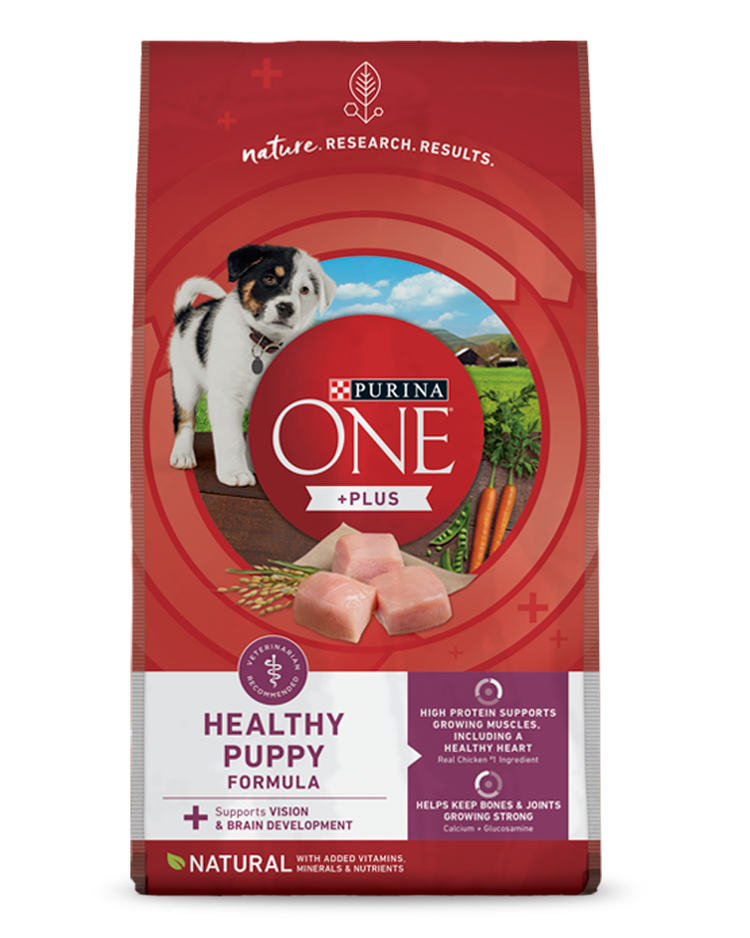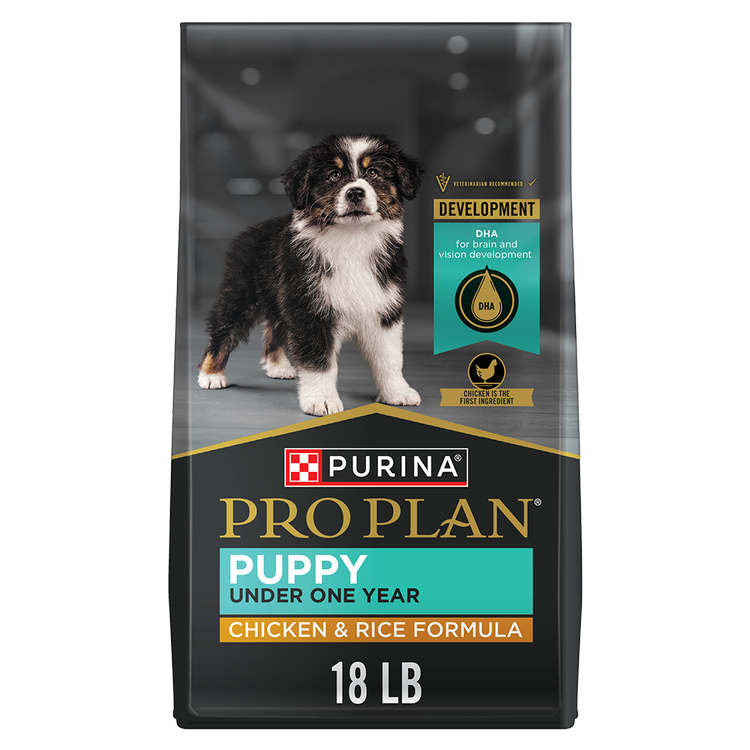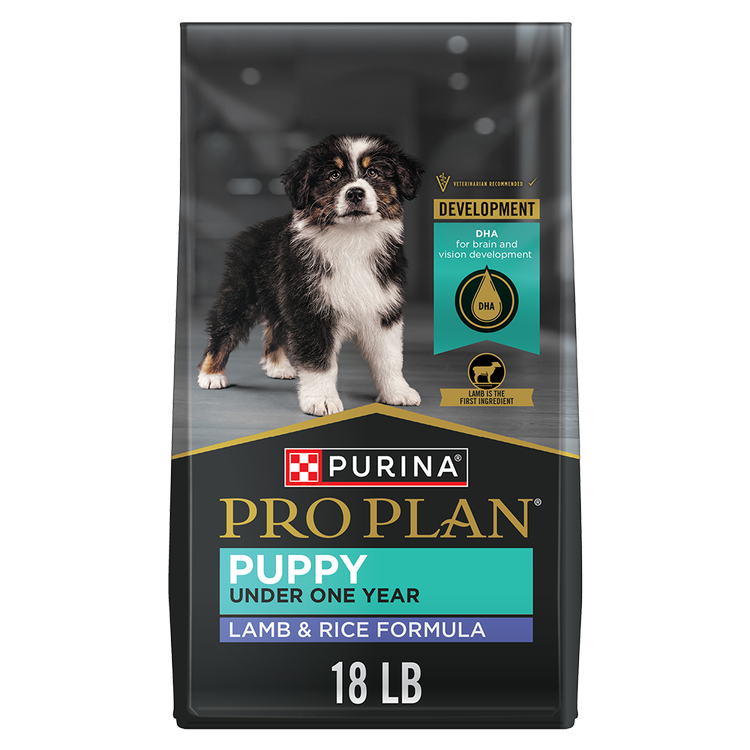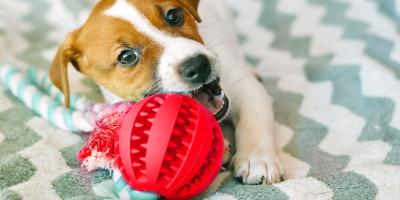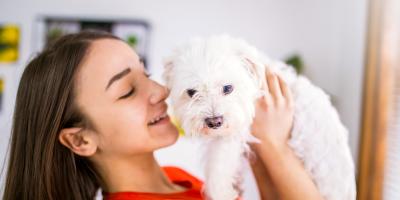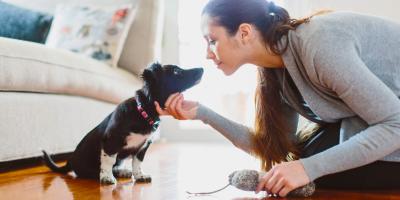Tips for Introducing a New Puppy to a New Home & to Other Dogs & Cats


Bringing a new puppy home is exciting. It’s important to ensure his new environment is safe and fun.
You’ll also want to prepare any other pets you have at home, as a new addition to the family can cause them stress. Here are some tips to help ensure introducing your new puppy is a smooth transition for everyone.
Bringing a New Puppy Home
As soon as you bring your puppy home, show him his potty area and allow him to sniff around and stretch his legs.
Next, put him in his crate for some quiet time. This gives him a chance to look around and get to know his surroundings without feeling overwhelmed with new people, other pets and distractions.
It’s best to keep his crate next to your bed for the first week or two if possible. Let him snuggle up with a towel or blanket from his first home. The familiar scent will help him relax. Hanging your arm over the bed so he can lick your fingers and smell your scent until he falls asleep can also help.
If your puppy has to sleep in a room away from you, a night light and a ticking clock or soft music may help him sleep better.
Most puppies will need to go outside to potty during the night and again in the early morning.
Making Your Home a Safe Place for Puppy
Just as you would “baby-proof” your home before a baby starts crawling, you should “puppy-proof” before bringing home your new puppy.
Puppies are naturally curious, so they may get into things you wouldn’t expect. Here are some puppy-proofing tips to keep in mind:
- Windows and Doors: Keep doors and windows closed until puppy is trained. He may see a squirrel running across the front yard and dart out the door if you’re not careful.
- Supervise Indoors and Out: Don’t leave your puppy unsupervised inside or outside. Puppies will get curious and investigate or take off after a rabbit. You may find he has soiled the carpet, chewed up your favorite shoes or started digging a hole at the fence line. Supervision keeps him safe – and protects your belongings.
- Watch Out for Heights: If you live in an apartment building with a balcony or a home with a high deck or porch, keep puppy leashed in those areas. If the rails are spaced wide enough for your puppy to slip his head through, consider blocking them off so he doesn’t get stuck.
- Keep Cleaning Supplies Out of Reach: Keep any cleaning solutions, disinfectants, fertilizers, insecticides and other hazardous or toxic items on a high shelf or in closet or room your puppy cannot access.
- Remove Poisonous Houseplants: Numerous houseplants are poisonous to dogs and cats. Before you bring your puppy home, do some research to find out which of your houseplants are poisonous and either remove them or place them in hanging baskets out of his reach. Make sure the plant leaves won’t fall in an area he can access.
Proper Puppy Food Storage
It’s crucial that you store all food in your home properly. This applies to both your food and his. We’ve all probably been guilty of leaving a bag of chips or a box of cereal open on the couch or kitchen table.
This may seem harmless, but many food bags – including pet food – are made from a strong material that helps keep food fresh. Curious puppies can get stuck if they go looking in the bag for leftover crumbs or an early dinner.
“Food packaging can be quite attractive to pets. Not only does it smell like food, but it makes a crinkling noise that pets associate with food, treats or play,” says Dr. Ragen T.S. McGowan, Ph.D. and research scientist in pet behavior at Purina.
“Make sure to store food or treat bags up high out of your pet’s reach, or inside cabinets or closets. We also recommend rolling the pet food bag closed and storing the entire item in a resealable, hard container so you can keep the label information handy,” she advises.
“A pet of any age, size or strength can quickly find themselves in a troubling – and potentially heartbreaking – situation when left unattended with a food bag. By using resealable containers, you limit the risk – and, as a bonus, your food will remain fresh.”
Similarly, remember to cut empty bags along the entire top, bottom and down at least one side before disposal, in case your curious puppy rummages through the trash.
Introducing Your Puppy to Other Dogs & Cats
It’s a good idea to introduce your puppy to other pets at a young age. Protect his new furry friends by keeping your puppy on his leash during introductions. If he misbehaves, look him in the eye and say “No.”
When introducing your puppy to a dog, try to have them meet outside while both are leashed. This allows them to sniff one another without immediately bringing up territorial or protective disputes.
When introducing your puppy to a cat, try putting one pet in a confined room so they can smell each other under the door before meeting. Letting them acclimate to one another’s smell first and foremost can make the process calmer for both pets.
Bringing home a new puppy is exciting. Following the above tips helps ensure everyone is safe and comfortable during this time of transition. Get more tips from our experts on our Pet Expertise page.

Be Rewarded for Your Purina Purchases
Earn and redeem points for Purina products with myPurina app.

